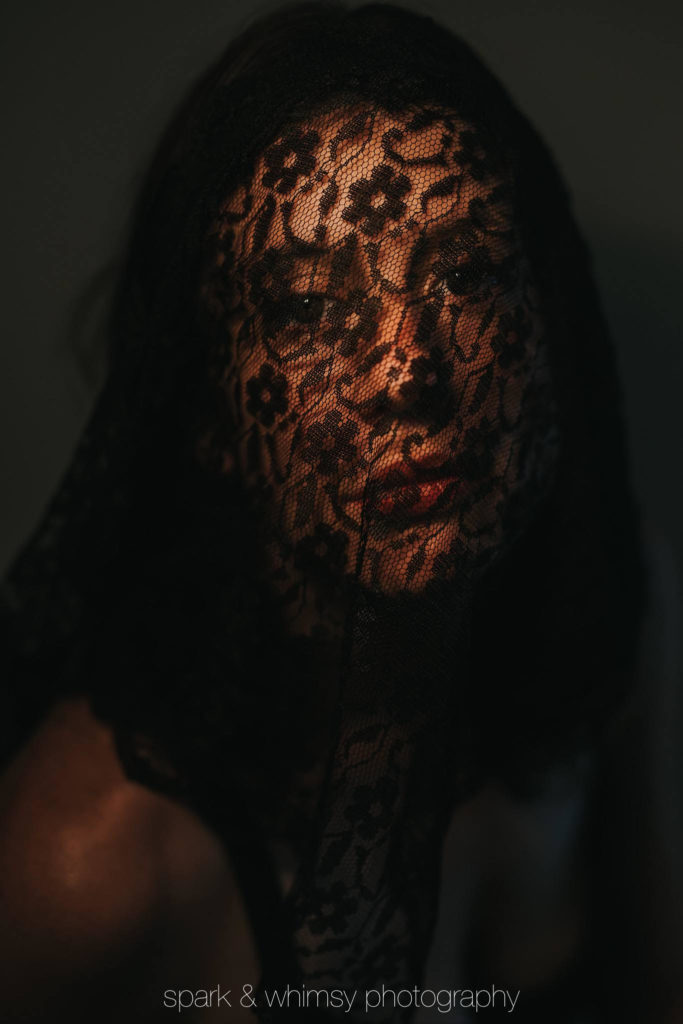By: Adi Vella
Please be advised that content in this article is of a sensitive nature and may trigger some readers. Reader discretion is strongly advised.
the wall is a gallery space in UPEI’s Dawson lounge for exhibitions of artwork with a special focus on portraiture. This space is coordinated jointly by This town is small (PEI’s artist run centre) and UPEI’s Anthropology and Sociology department.
–
About Dissonance
Dawson lounge’s the wall is currently hosting an art exhibit called ‘Dissonance’ that opened on January 20th, 2018 and will be on display until the first week of March. This art exhibit is a collaboration between Norah Pendergast, a PEI-based educator, and her friend Juliana Wigmore, a photographer/artist based in BC but born in PEI.
Norah Pendergast agreed to elaborate about her art exhibition to us at The Cadre on a crisp Sunday morning.
“This exhibit came to exist as I approached my best friend [Juliana] to take my headshots,†said Ms. Pendergast, “and after an hour of experimenting during that photoshoot we ended up with these photographs and several others.â€
She said that this art exhibition, through its spontaneous staging and expressiveness of its portraits, documents an abusive relationship and its consequences as seen by someone in our own community.
“With that experience I had [of domestic violence], there was no sort of justice or resolutionâ€, Pendergast explained. “I had to continue living in this small community with a man and his enablers who had traumatized me on numerous occasions, never knowing when or where I would see them. I kind of started seeing that this [art exhibit] might be a way for me to relieve some of my discomfort caused by the lack of justice in my situation. And it has [laughs]. It feels great to let that out and air that. I guess that’s one of the roles of confession in society, [which] is that rebalancing of the variables.â€
Pendergast explained that her artwork falls into the genre of confessional art and that Shoshana Felman’s writing had a strong effect on her. It made her question the role of confession in society and why we should be talking about these experiences of injustice.
Commenting on the visual quality of these portraits, Pendergast says that she and her artistic collaborator Wigmore agreed on the stark contrast and an almost surreal aesthetic. “The use of the veil and the feather in these portraits is meant to symbolise how we often hide trauma from ourselves and those around usâ€, Pendergast said.
Juliana Wigmore is influenced by the works of Annie Leibovitz, Helmut Newton and Susan Bryce. Wigmore believes that portraits serve as artefacts and heirlooms from our lives and act as markers of time and our experiences, not only for us but also for people in our lives.
Juliana says the images in Dissonance offer viewers a chance to explore the use of confession in society, and hopefully reflect on ways they might express and release their own traumas.
Pendergast said she really appreciates the academic setting for her exhibit and would like her artwork to be approached with an academic lens, saying “the themes are very [closely] tied to social and anthropological issuesâ€. The exhibit is accompanied by an essay written by Natalie B. Pendergast (Norah’s sister), who has a PhD. in comparative literature with an emphasis on representations of self in autobiographical graphic novels.
An artist talk is planned for February 15th, discussing various aspects of the exhibition. Pendergast will be in attendance and Wigmore will be connected via video call to address the gathering. The talk is an opportunity for students and the general public to engage with the artists and learn from their experience as well as share their own.
On the #MeToo movement
Pendergast remarks it was fascinating to see how these events have unfolded, especially within the local community.
“There was a lot going on locally,†she says. “There was a song ‘Microphone’ in which a local musician, Kinley gives a testimony of her rape. She is such a brave hero and that was happening right at the time I finally detached from my abuser. That summer was very dystopic for me. That’s when we did the shoot, we never planned that [the photographs] would be exhibited in public, but here we areâ€.
Pendergast recalled emotional impact  when #MeToo reached the mainstream.“The week of #MeToo was really intense,†she said. “I was very triggered all week and you could feel that a lot of women were. When I woke up that Sunday morning and saw all the #MeToos in my newsfeed it was like a dragon was breathing fire on all the ickiness. When we did the photoshoot it was before #MeToo. Now it is after. Everything has changed â€.
Pendergast stressed on the importance of all the stories that have surfaced during the #MeToo movement.
“Suddenly there was this onslaught of writing, really good writing from all over the world,†she notes, “articles saying the things that I had been feeling about the injustice I had lived through, these incidents of shocking harassment/assault in a grey area for which we didn’t have the language before #MeTooâ€.
Going forward with the #MeToo, Pendergast believes that we really need to bring it down to the local level. “This happens in Charlottetown, it happened to meâ€.
Photo credit: Juliana Wigmore
